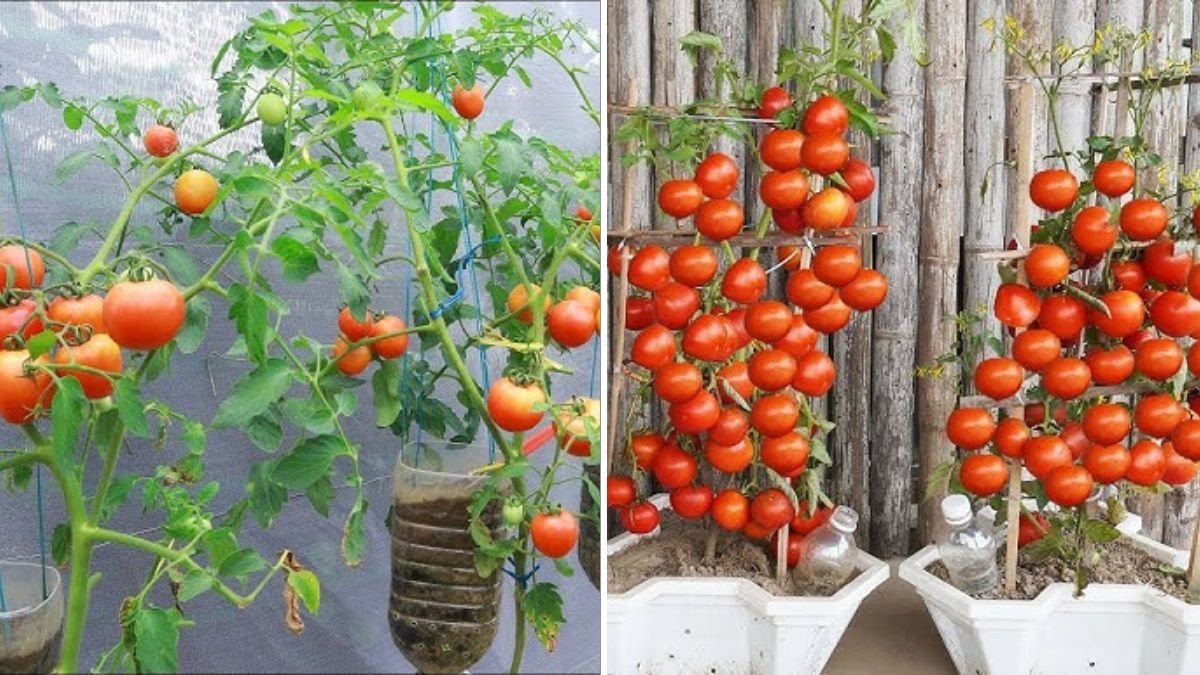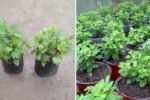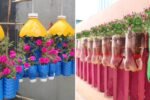Who says you need a backyard to grow your own vegetables? With a clever 2-in-1 hanging garden setup, you can grow lettuce and tomatoes right from your porch, balcony, or even an apartment window. This space-saving, low-maintenance gardening trick lets you enjoy crisp greens and juicy tomatoes — all from the same hanging planter!
Perfect for urban gardeners, apartment dwellers, or anyone short on space, this DIY method combines beauty and practicality. It turns unused airspace into a mini garden oasis that delivers a steady harvest of homegrown produce. Plus, it’s budget-friendly and surprisingly easy to make.
Let’s dive into how to create your very own 2-in-1 hanging garden that grows two of America’s favorite vegetables — lettuce and tomatoes — without a patch of soil in the ground.
Why Choose a 2-in-1 Hanging Garden?
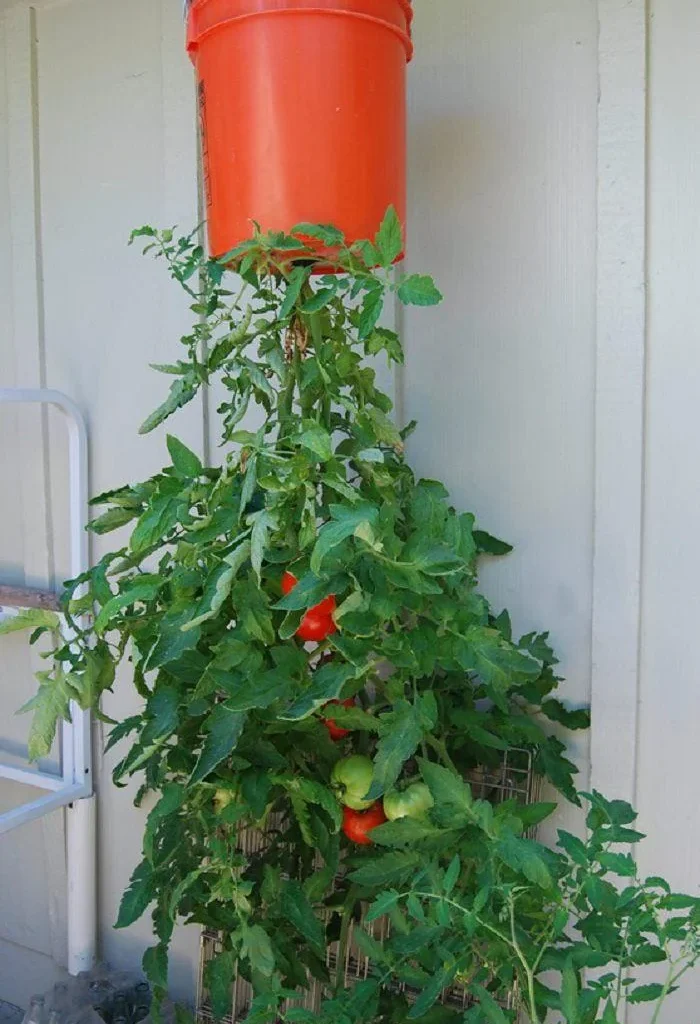
This vertical gardening idea is taking off across the U.S. — and for good reason. It’s sustainable, compact, and productive. Here’s why this system is a game-changer:
- Saves Space: Perfect for patios, balconies, or small decks.
- Efficient Water Use: Hanging planters require less water than garden beds.
- Dual Harvests: Grow leafy greens and fruiting vegetables in one compact setup.
- Pest Control: Fewer soil-based pests and diseases.
- Beautiful and Functional: Adds greenery and life to your home exterior.
Even if you live in a city apartment, this system lets you experience the joy of gardening — and the flavor of fresh, organic produce grown right at home.
What You’ll Need for Your 2-in-1 Hanging Garden
The best part? You can make this system using simple materials — no professional tools or large yard required.
Materials List
- Two 5-gallon hanging planters (plastic or fabric grow bags work great)
- Sturdy hanging hooks or ceiling mounts
- High-quality potting mix (well-draining, nutrient-rich)
- Tomato plant (cherry or dwarf variety)
- Lettuce seeds or seedlings
- Slow-release organic fertilizer or compost
- Watering can or small drip irrigation setup
- Optional: Coconut coir or perlite for better drainage
You can find all of these at your local garden center, Home Depot, or online stores like Amazon.
Choosing the Right Plants
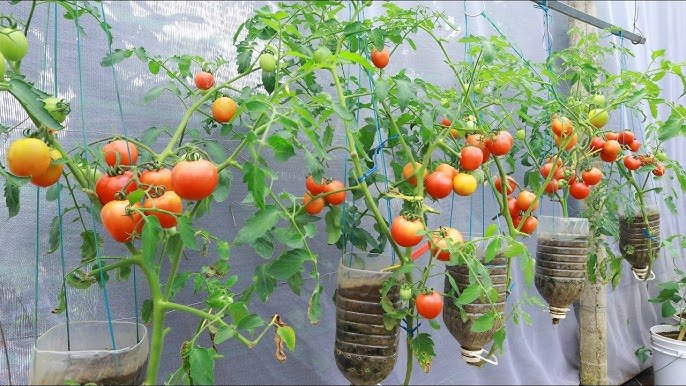
The secret to a successful 2-in-1 hanging garden lies in pairing plants that complement each other.
- Tomatoes: Choose compact, hanging, or determinate varieties such as Tiny Tim, Red Robin, or Tumbling Tom. These grow downward beautifully from hanging planters.
- Lettuce: Go for loose-leaf types that don’t need deep soil — Buttercrunch, Romaine, Oakleaf, or Black-Seeded Simpson are excellent picks.
This combination is perfect because tomatoes love sun and warmth, while lettuce enjoys a bit of shade — which it conveniently gets from the tomato vines above.
Step-by-Step Guide to Creating Your Hanging Garden
Step 1: Choose the Location
Pick a spot with at least 5–6 hours of sunlight per day — a balcony railing, patio beam, or a sunny window ledge. If possible, choose a spot sheltered from heavy wind since hanging plants can sway.
If growing indoors, you can supplement sunlight with LED grow lights positioned above your planters.
Step 2: Prepare the Hanging Planters
Use two-tier hanging baskets or create your own stacked setup. The top layer will grow lettuce, and the bottom layer will hang tomatoes.
Drill a few small holes in the bottom of each planter for drainage. Line the interior with coconut coir or a fine mesh to keep the soil in place while allowing excess water to drain out.
Step 3: Add Soil and Nutrients
Fill both planters with light, fluffy potting mix mixed with compost. Avoid using garden soil, as it’s too dense for hanging gardens.
Mix in a small amount of slow-release organic fertilizer to give your plants a steady nutrient supply.
Step 4: Plant the Tomatoes (Bottom Planter)
If your planter has an opening at the bottom (like an upside-down tomato grower), gently insert the tomato seedling through the hole so it hangs downward.
If not, plant the tomato in the center of the bottom basket and allow its stems to trail over the edges as it grows.
Water thoroughly and ensure it’s secure in the soil. Tomatoes need space for roots, so the bottom planter should be at least 10–12 inches deep.
Step 5: Plant the Lettuce (Top Planter)
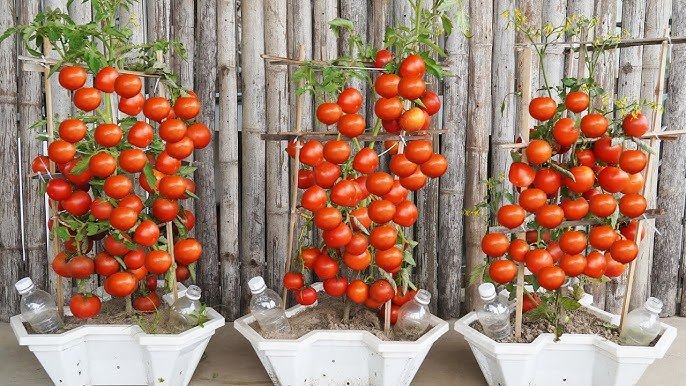
Next, fill the top basket with your potting mix and sprinkle lettuce seeds evenly or plant small seedlings about 6 inches apart.
Because lettuce has shallow roots, it doesn’t need much soil depth — around 6 inches is plenty.
The top basket provides a lush canopy, while the bottom tomato plant benefits from any excess water dripping down — creating a natural water-efficient system.
Step 6: Install the Hanging Setup
Securely attach your hanging hooks or brackets to a strong support beam, porch ceiling, or railing.
Make sure the planters hang at eye level or slightly above so you can easily harvest and water them. You can even connect both baskets using a metal chain or rope for a compact stacked look.
Step 7: Water and Maintain
Water both planters thoroughly after planting. From then on:
- Water once daily in summer, every 2–3 days in cooler months.
- Check moisture by touching the topsoil — if it’s dry, it’s time to water.
- Add a drip irrigation line or self-watering system if you want a low-maintenance setup.
You’ll notice lettuce sprouting within 7–10 days, and tomato flowers appearing after 3–4 weeks.
Pro Tips for Bigger Harvests
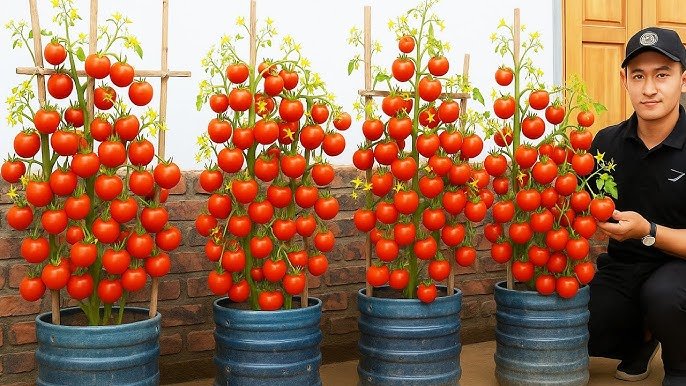
- Rotate the planters every few days for even sunlight exposure.
- Prune tomato vines regularly to prevent shading your lettuce too much.
- Harvest lettuce leaves early — it promotes regrowth.
- Add compost tea every 2–3 weeks for nutrient boosts.
- Use companion plants like basil or marigold nearby to deter pests naturally.
Common Mistakes to Avoid
Even easy systems need attention! Watch out for these:
- Overwatering: Hanging gardens drain slower; check moisture before watering.
- Heavy soil: Always use lightweight mixes — dense soil causes poor drainage and root rot.
- Insufficient sunlight: Tomatoes won’t fruit without enough light.
- Ignoring support: Make sure your hanging hooks can handle the planter’s full weight (especially when wet).
By avoiding these pitfalls, your hanging garden will thrive season after season.
Why Lettuce and Tomatoes Are the Perfect Pair
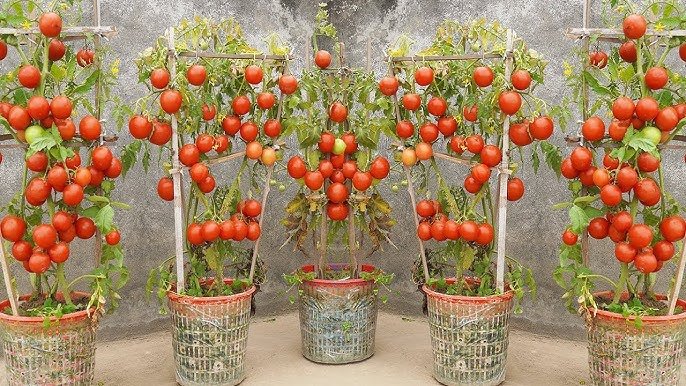
This combination isn’t just convenient — it’s gardening chemistry at its best.
- Tomatoes love warmth and full sunlight.
- Lettuce prefers cooler conditions and light shade.
When grown together, the tomato leaves shade the lettuce, keeping it from bolting (prematurely flowering) during hot summer days. Meanwhile, the lettuce helps retain moisture in the soil below.
It’s a symbiotic setup that makes the most of your small space.
Harvest Time!
After about 4–5 weeks, your lettuce will be ready for its first harvest. Simply cut the outer leaves, leaving the center intact so it keeps producing.
For tomatoes, expect ripe fruit in 8–10 weeks, depending on the variety. Keep harvesting regularly to encourage new blooms.
Before you know it, you’ll be tossing together homegrown salads made entirely from your hanging garden!
The Eco-Friendly Bonus
Besides convenience, this gardening method is incredibly eco-friendly:
- Reuses containers instead of buying new ones.
- Reduces water waste through drip or gravity-fed watering.
- Cuts down grocery trips and packaging waste.
- Promotes sustainability — growing local, eating fresh.
You’re not just growing food; you’re making a positive environmental impact — one hanging basket at a time.
Final Thoughts: Small Space, Big Harvest
You don’t need acres of land or fancy equipment to grow your own vegetables. With this 2-in-1 hanging garden system, you can enjoy the freshness of homegrown lettuce and tomatoes right outside your window.
It’s easy to build, simple to maintain, and perfect for anyone who wants to live greener, eat healthier, and make the most of small spaces.
So grab a few hanging baskets, your favorite seeds, and some good soil — and start your mini sky garden today. You’ll be amazed at how rewarding it feels to pluck a ripe tomato or crisp lettuce leaf from your own hanging paradise.
